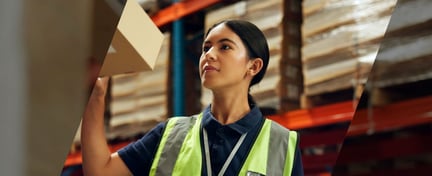A growing emphasis on assurance across additive manufacturing reflects an industry entering a new stage on its journey to maturity. Building confidence in AM products is both necessary and increasingly urgent, argues LRQA's Andy Imrie.
It's been almost 2000 years since one of Rome's great philosophers, Tacitus, pointed out the link between risk and innovation when he said, "The desire for safety stands against every great and noble enterprise."
He's right, and I get the point - what he overlooked, however, is that the mismanagement of risk can be just as catastrophic to the march of progress as the nuclear industry can attest.
In the field of AM, a 'desire for safety' has not been a barrier to progress. This revolutionary manufacturing technique has been applied overwhelmingly in non-safety critical areas, with regulators – notably in medicine and aerospace – relatively quick to adapt.
Looking at the bigger picture, however, there are signals that economic, political and competitive forces are combining to force the pace of change both further and faster. As this happens, maintaining trust and confidence in the technology will be critical.
With impacts reaching far beyond manufacturing and supply, two events in the past year alone have served to highlight the potential gains that AM has to offer.
By scale, the two don't normally compare but their hold on the global manufacturing industry and supply chains has been near catastrophic in equal measure.
Both the global pandemic and the grounding of the Ever Given in the Suez Canal tested supply chains to their limit, exposing just how vast, complex and fragmented modern production and supply has become.
For each day the Ever Given spent blocking the canal, data from Lloyd's List suggests that an estimated $9.6bn of trade was held up.
It's perhaps no surprise that both the scale and severity of these events has caused businesses to look afresh at the potential for AM to shrink the complexity and geographic spread of their supply chains.
Politically too, the winds of change are blowing in additive manufacturing's direction. As the world 'builds back better' and greener, we can expect legislation in favor of the circular economy.
The UK Government's enthusiastic post-Brexit adoption of EU 'eco-design' regulation is a case in point. With manufactured goods required in law to be more easily repairable, longer-lasting and spares available on-demand, the opportunity for AM to meet that need is obvious. In industrial contexts too, additive manufacturing promises an antidote to the rapid growth in obsolescence that has accompanied technological and digital progress.
It is against this backdrop that we are seeing a shift from a 'prototype' to a 'production' mindset amongst AM businesses and a greater focus on removing risk from their supply chain. A pressing challenge in a landscape that is complex and changing at pace.
In more established cases, certification is already well developed but elsewhere, as AM products are used in more safety-critical applications, assurance is rising fast up the agenda.
nearly 60 ISO/ATSM certification standards are currently being created, to ensure they are relevant and applicable to additive manufacturing products and processes
Through ISO 52920, manufacturers will soon be able to ensure that their facilities are qualified and nearly 60 ISO/ATSM certification standards are currently being created, to ensure they are relevant and applicable to additive manufacturing products and processes.
Facilities qualification, however, is moving more quickly than certification, which is one reason why, as early as 2015, we published the first in a series of guidance notes for the safe adoption of AM technology. Covering design, materials, production, inspection and testing, this guidance anticipated the rapid and disruptive growth of the sector and creates a route to assurance for companies looking to get ahead of the assurance curve.
In such a competitive and fast-changing field, many companies are already choosing to set the assurance agenda.
Our customer, MX3D, is a prime example. Using our guidance notes as a start point, this innovative Dutch business has turned to us for training and consultancy services, as it prepares itself for certifying its wire arc additive manufacturing capabilities. Having recently raised €2.25 million in funding to support growth, MX3D recognizes that assuring customers that AM products are safe, reliable and of the highest quality is integral to the journey.
Whether driven by regulators, standards bodies or the industry itself, the emergence of an assurance culture in additive manufacturing can only make it more likely that this 'great and noble enterprise' will deliver on its enormous promise.




